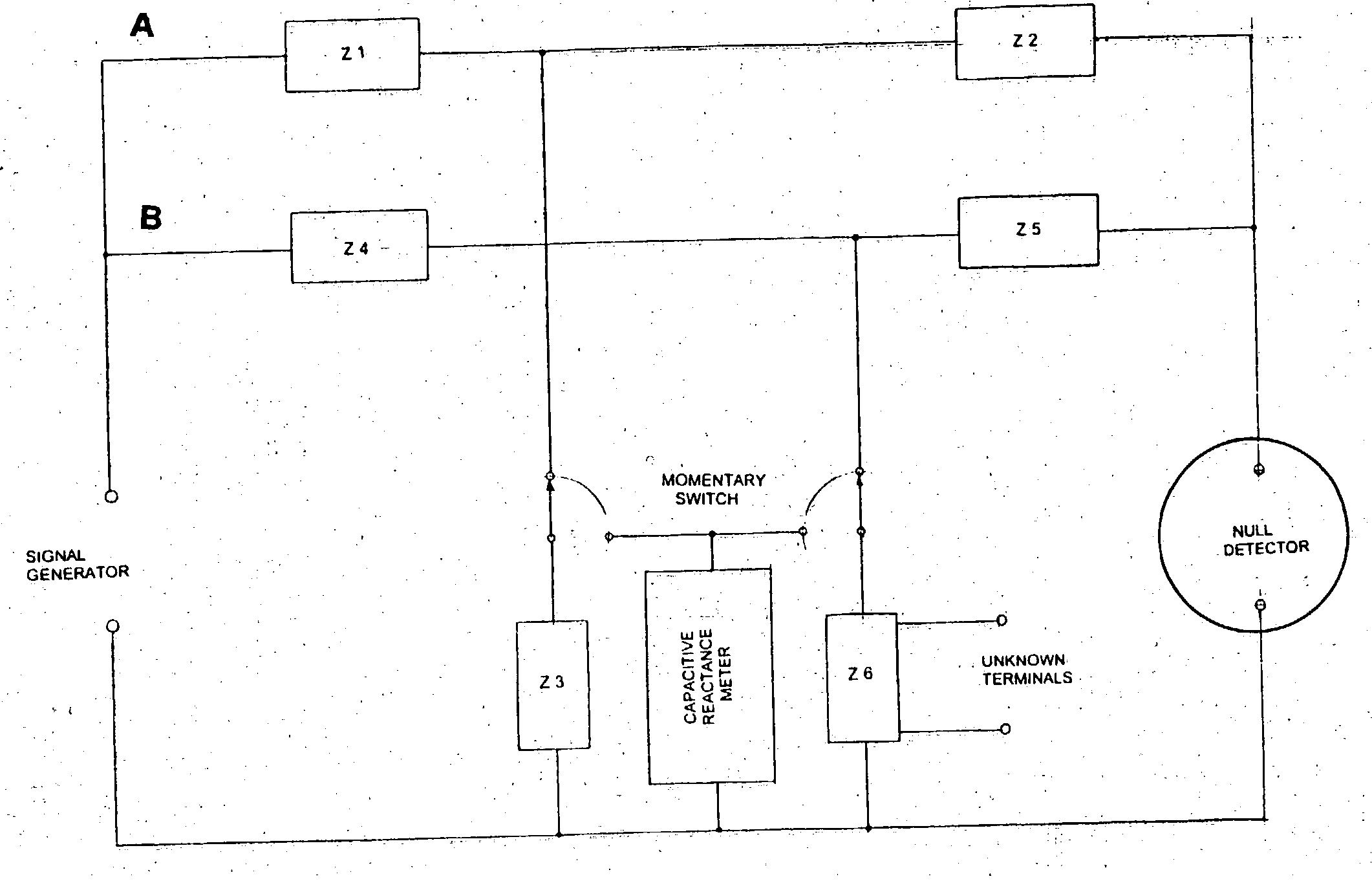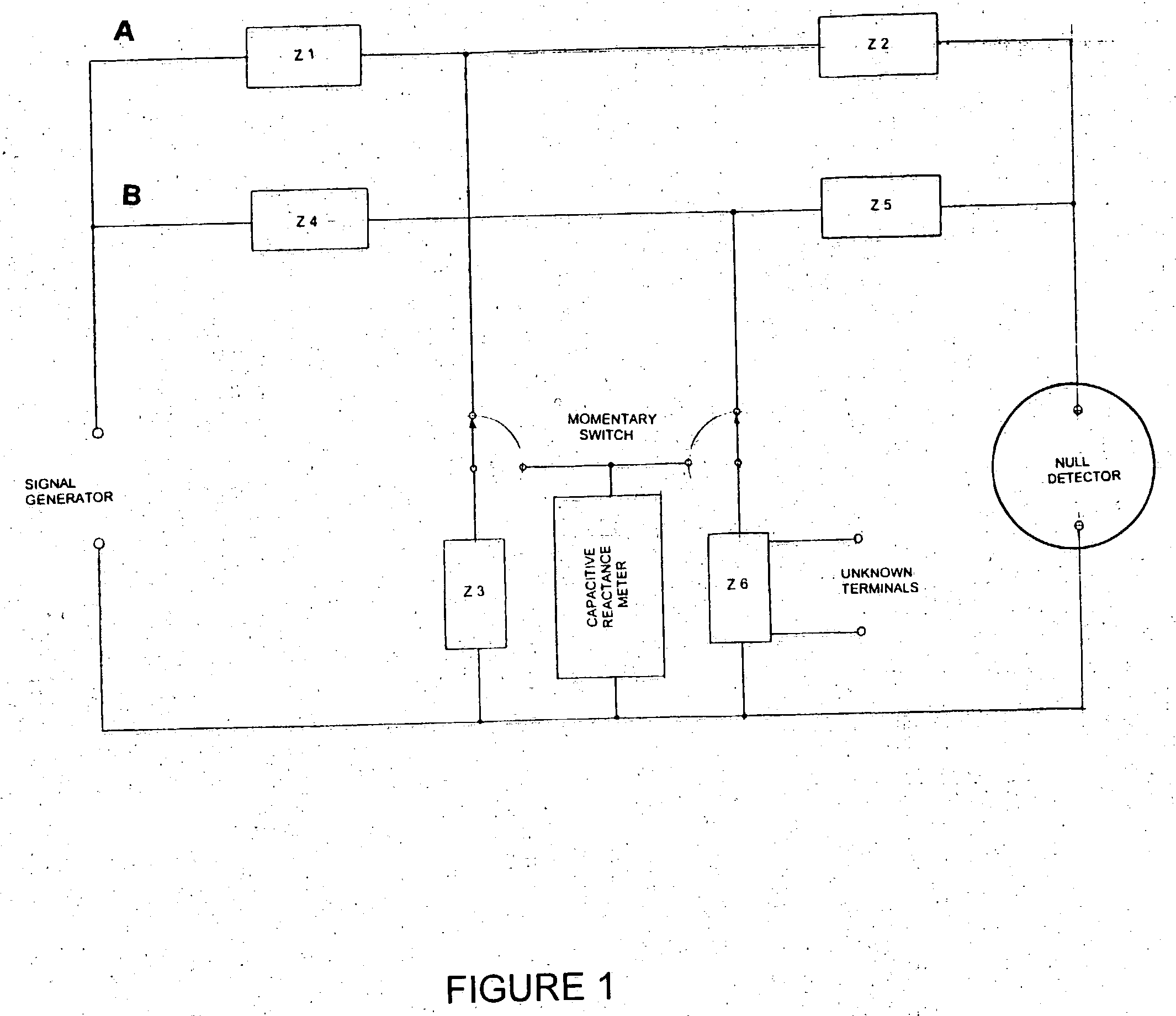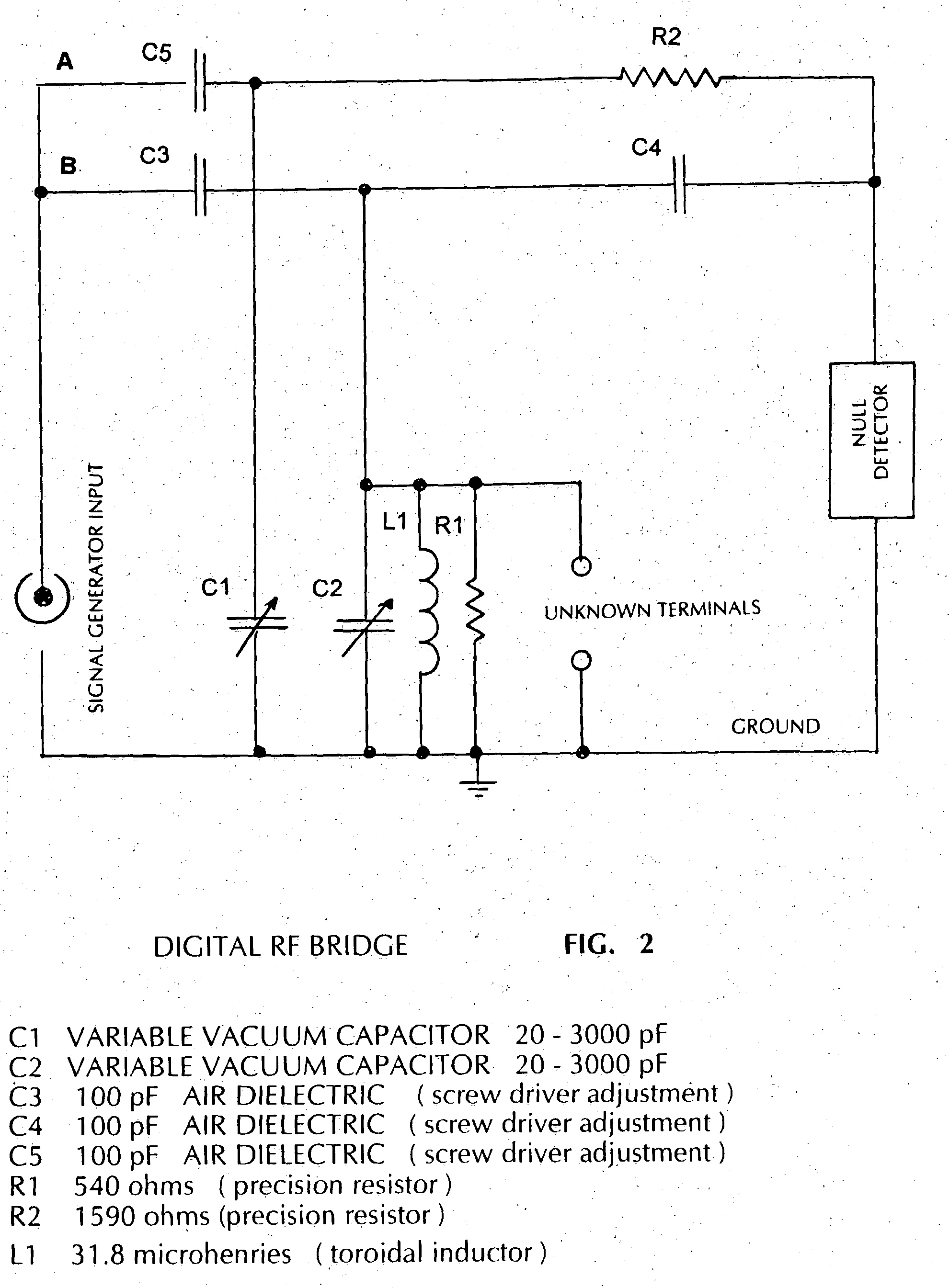Digital RF bridge
- Summary
- Abstract
- Description
- Claims
- Application Information
AI Technical Summary
Benefits of technology
Problems solved by technology
Method used
Image
Examples
Embodiment Construction
[0015] See FIG. 3. The Digital RF Bridge is an adaptation and variation of the conventional twin-t network. The T labeled A consists of resistance and capacitive reactance while the T labeled B has a shunt leg consisting of resistance, positive reactance and negative reactance in a parallel combination across which the unknown terminals are connected. This unusual configuration allows measurements of both positive and negative reactance with the shunt leg of the B network and resistance only with the shunt leg of the A network. The schematic diagram labeled FIG. 2 shows that the variable capacitor C! forms the shunt leg of A network and the variable capacitor C2 forms part of the shunt leg of B network. Increments of reactance of these two variable capacitors are used in the calculations of parallel resistance and reactance components of the unknown impedance under measurement.
[0016] As a part of the Digital RF Bridge, there is an electronic device that sends information to the com...
PUM
 Login to View More
Login to View More Abstract
Description
Claims
Application Information
 Login to View More
Login to View More - R&D
- Intellectual Property
- Life Sciences
- Materials
- Tech Scout
- Unparalleled Data Quality
- Higher Quality Content
- 60% Fewer Hallucinations
Browse by: Latest US Patents, China's latest patents, Technical Efficacy Thesaurus, Application Domain, Technology Topic, Popular Technical Reports.
© 2025 PatSnap. All rights reserved.Legal|Privacy policy|Modern Slavery Act Transparency Statement|Sitemap|About US| Contact US: help@patsnap.com



